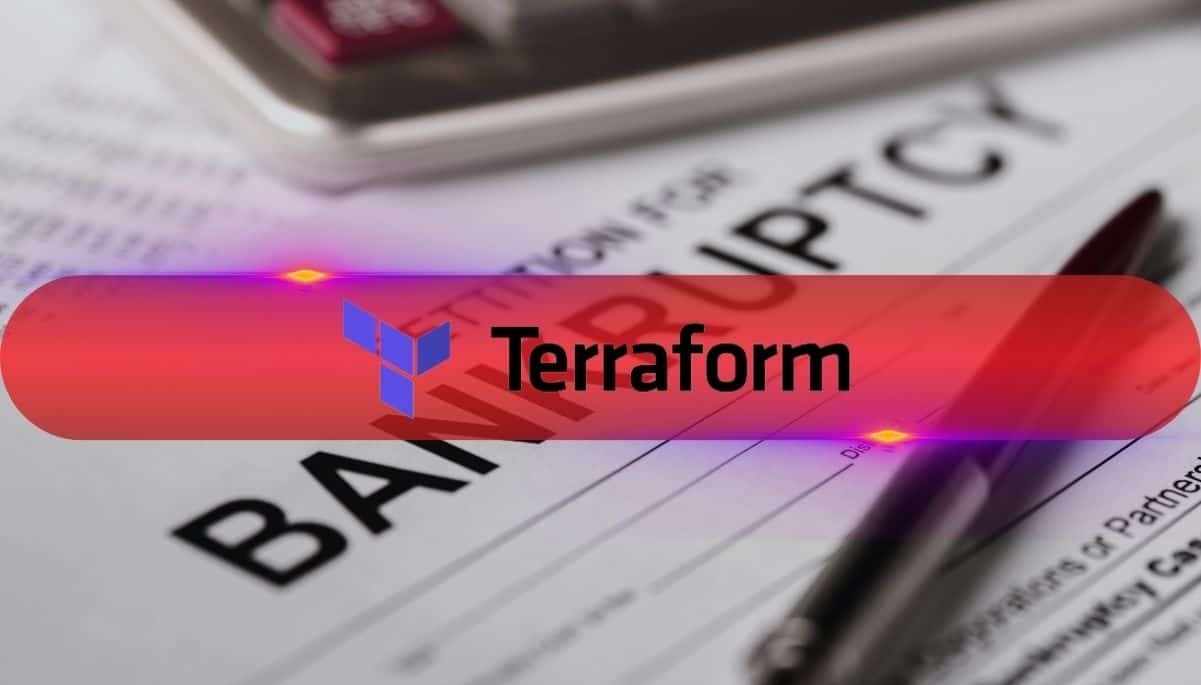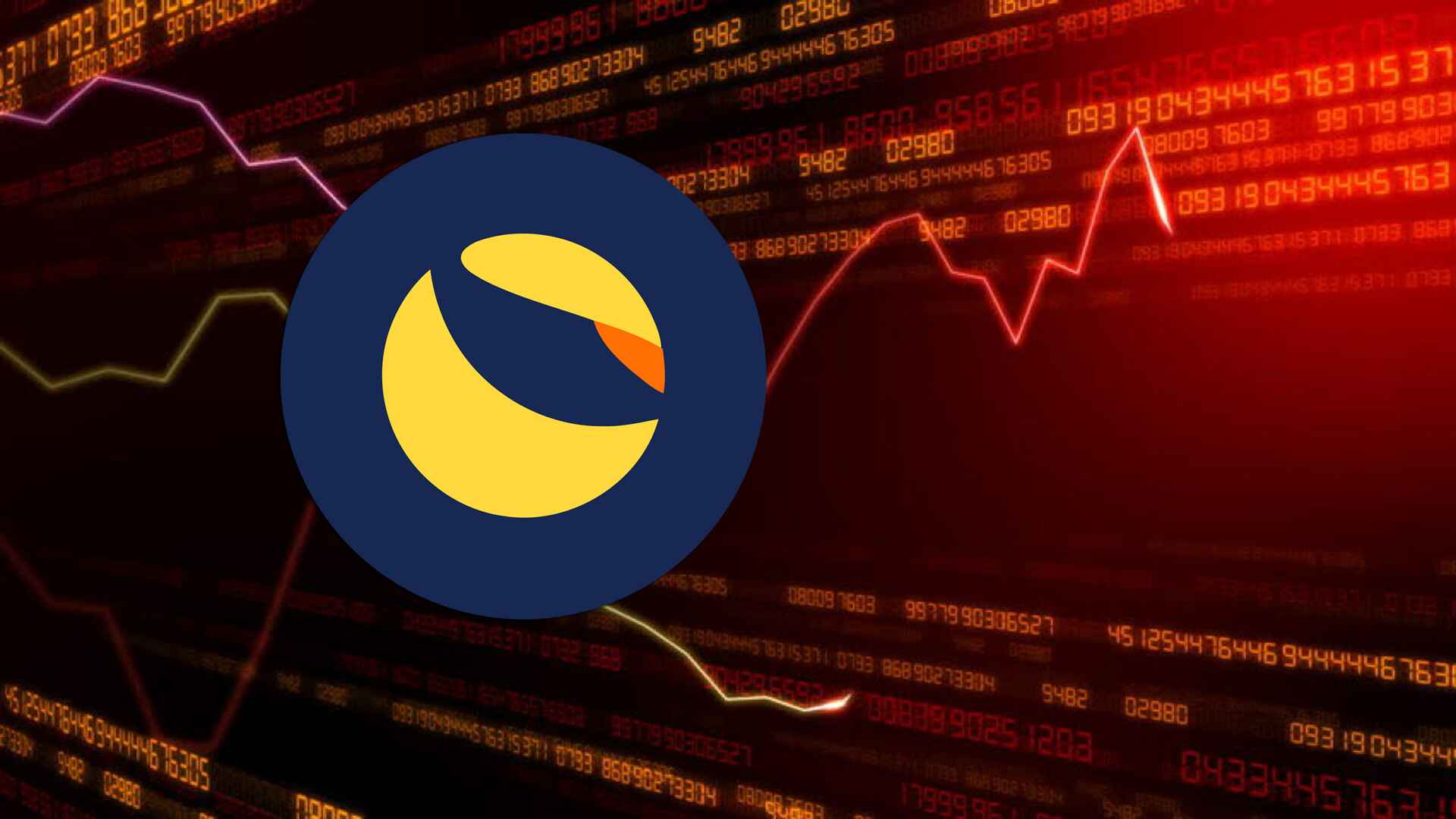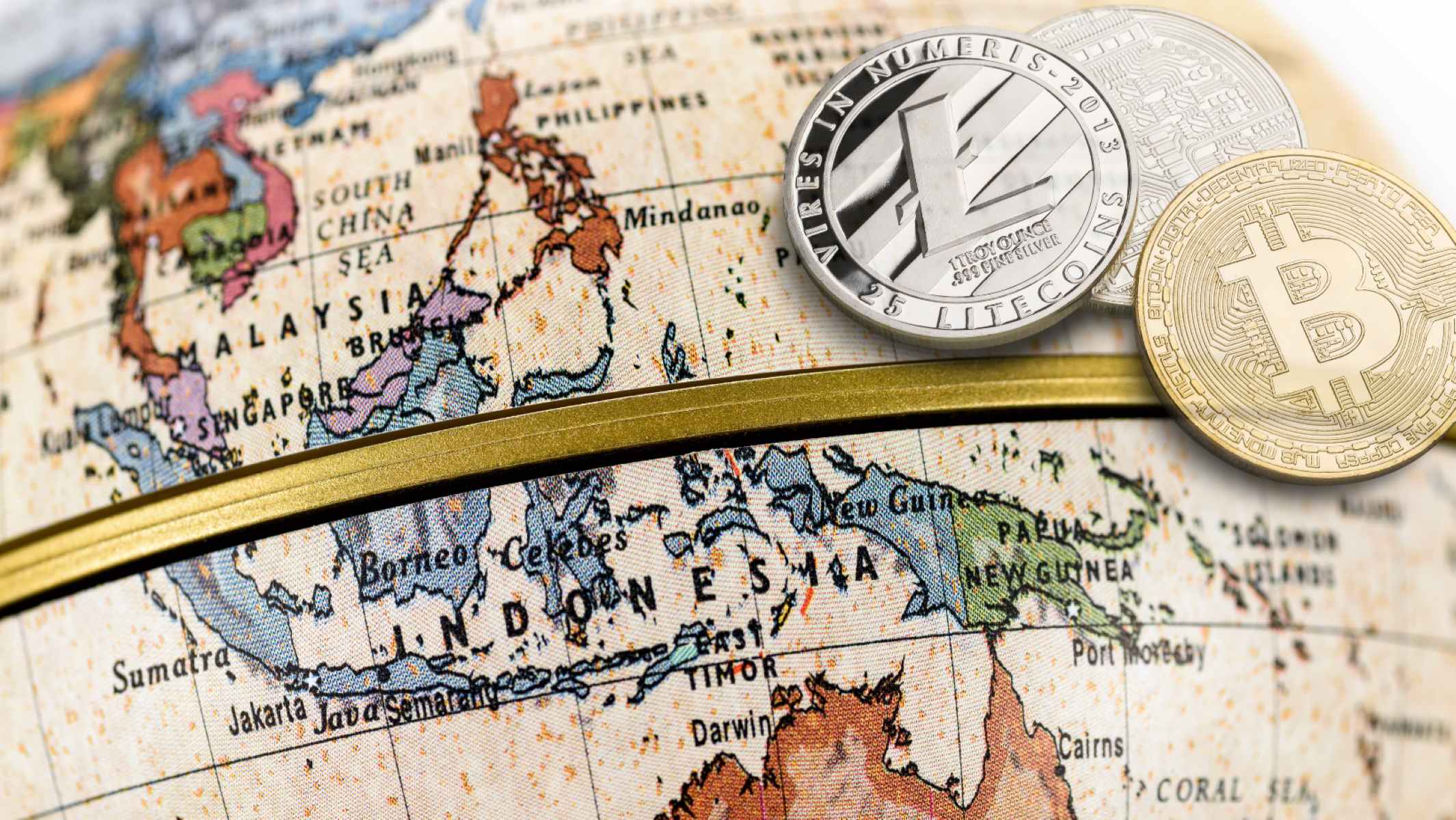Introduction
Welcome to the world of Terra Luna, a cryptocurrency that has gained significant attention in recent years. If you’re new to the realm of digital currencies, you may be wondering what Terra Luna is all about. Look no further, as this article will provide you with a comprehensive overview of this innovative crypto.
Terra Luna is not just another cryptocurrency; it is an entire ecosystem that aims to revolutionize the way we make transactions and use stablecoins. Developed by Terraform Labs, Terra Luna combines the stability of fiat currencies with the efficiency of blockchain technology.
By leveraging the decentralized nature of blockchain, Terra Luna provides users with a fast, secure, and cost-effective solution for conducting global transactions. This groundbreaking approach eliminates the need for intermediaries, such as banks, thereby reducing transaction fees and increasing accessibility for individuals around the world.
In this article, we will explore how Terra Luna works, delve into its stablecoin ecosystem, examine the Terra Luna blockchain, and discuss the Terra Luna token (LUNA). Additionally, we will highlight the advantages of Terra Luna and explore potential use cases for this innovative cryptocurrency.
Whether you are a seasoned cryptocurrency investor or just starting your journey in the digital asset space, understanding Terra Luna is crucial. This article aims to provide insights into the fundamentals of this exciting crypto project and equip you with the knowledge to navigate the Terra Luna ecosystem with confidence.
What Is Terra Luna?
Terra Luna is a blockchain-based cryptocurrency ecosystem that aims to create a stable and scalable digital economy. The project was founded by a South Korean company called Terraform Labs, led by Daniel Shin and Do Kwon, in 2018. Terra Luna’s primary goal is to establish a bridge between the traditional financial system and the world of decentralized finance (DeFi).
At its core, Terra Luna is built on the Terra blockchain, which utilizes a combination of stablecoins and smart contracts to enable fast and secure transactions. Unlike other cryptocurrencies that experience price volatility, Terra Luna’s stability is maintained through its native stablecoins, which are pegged to various fiat currencies.
The Terra Luna ecosystem offers a range of stablecoins, including TerraUSD (UST), TerraKRW (KRT), TerraSDR (a Special Drawing Rights-denominated stablecoin), and others. These stablecoins provide users with price stability and act as a medium of exchange, making Terra Luna an attractive platform for merchants and users alike.
By leveraging blockchain technology, Terra Luna eliminates the need for intermediaries, such as banks, to facilitate transactions. This decentralized approach not only reduces transaction fees but also enhances security, privacy, and transparency. Additionally, Terra Luna aims to empower the unbanked population by providing them with easy access to financial services through their mobile devices.
One of the key features of Terra Luna is its ability to maintain price stability. This is achieved through a mechanism called the Terra protocol, which ensures that the stablecoins remain pegged to their respective fiat currencies. The protocol utilizes a combination of algorithmic and decentralized mechanisms to maintain price stability, making Terra Luna a reliable medium of exchange.
Furthermore, the Terra Luna ecosystem is designed to be highly scalable. The Terra blockchain can process thousands of transactions per second, ensuring that users can quickly and efficiently complete their transactions without experiencing delays or congestion.
In summary, Terra Luna is a blockchain-based cryptocurrency ecosystem that aims to create a stable and scalable digital economy. By leveraging stablecoins, smart contracts, and a decentralized approach, Terra Luna provides users with a secure, efficient, and accessible platform for conducting transactions. As we explore deeper into the Terra Luna ecosystem, you will discover how these elements work together to revolutionize the world of finance and commerce.
How Does Terra Luna Work?
At its core, Terra Luna operates on a two-token system: the Terra Stablecoin and the Terra Luna token (LUNA). Let’s dive into how these tokens work and the mechanisms that enable Terra Luna to function.
The Terra Stablecoin is the primary medium of exchange within the Terra Luna ecosystem. It is designed to maintain a 1:1 peg with various fiat currencies, such as the US dollar, Korean won, and others. The stability of these stablecoins is achieved through the seamless integration of algorithmic and decentralized mechanisms.
When a user wants to mint Terra stablecoins, they can purchase LUNA and deposit it into a smart contract called the Terra Stability Reserve (TSR). The TSR acts as a collateral pool that supports the value of the stablecoins. This mechanism secures the stability of the Terra stablecoins, as the value of the collateral always exceeds the value of the stablecoins in circulation.
Another key component of the Terra Luna system is the Oracle mechanism. Oracles are trusted data sources that provide the Terra blockchain with real-time price feeds of the fiat currencies in which the stablecoins are pegged. These price feeds play a crucial role in maintaining the stability of the stablecoins by ensuring that their value accurately reflects that of the respective fiat currencies.
With the stability of the Terra stablecoins established, users can freely transact with them for various purposes, such as online purchases, remittances, and everyday transactions. These transactions are processed by the Terra blockchain, a robust and scalable infrastructure that supports high transaction throughput.
As for the Terra Luna token (LUNA), it serves multiple purposes within the ecosystem. Firstly, LUNA holders play a vital role in securing the Terra blockchain by participating in consensus and governance processes. They stake their LUNA tokens, and in return, they earn rewards and contribute to the overall security and stability of the network.
Additionally, LUNA tokens are burned through a process called seigniorage. When the stablecoin supply exceeds its targeted value, new Terra stablecoins are issued and sold on the market. The income generated from this process is used to buy back and burn LUNA tokens, reducing the circulating supply and potentially increasing the value of each token.
By combining stablecoins, smart contracts, oracles, and a two-token system, Terra Luna creates a powerful and dynamic ecosystem that allows for stable and efficient transactions. The seamless integration of these components ensures that users can have confidence in the stability and reliability of the Terra Luna network.
In the next section, we will explore the stablecoin ecosystem of Terra Luna in more detail, and understand the different stablecoin offerings it provides to users.
The Stablecoin Ecosystem
One of the key features of Terra Luna is its robust stablecoin ecosystem. Stablecoins are digital assets that are designed to maintain a stable value, typically pegged to a fiat currency. The Terra Luna ecosystem offers a variety of stablecoins that cater to different regions and currencies, providing users with options to suit their specific needs.
The flagship stablecoin within the Terra Luna ecosystem is TerraUSD (UST). As the name suggests, TerraUSD is pegged to the US dollar and aims to provide stability in value comparable to that of traditional fiat currencies. TerraUSD enables users to transact and store value in a digital asset that mirrors the stability of the US dollar, without the need for a centralized authority.
In addition to TerraUSD, the Terra Luna stablecoin ecosystem includes stablecoins pegged to other fiat currencies. For example, TerraKRW (KRT) is pegged to the Korean won, providing stability for users in South Korea. This stablecoin has gained popularity in the local market due to its convenient accessibility and reliability.
Another notable stablecoin in the ecosystem is TerraSDR, a stablecoin pegged to Special Drawing Rights (SDR). SDR is an international reserve asset created by the International Monetary Fund (IMF), representing a basket of major global currencies. TerraSDR serves as a borderless stablecoin that can be used for various international transactions, providing users with a stable value tied to a diversified basket of currencies.
These stablecoins play a crucial role in enabling efficient and low-cost transactions within the Terra Luna ecosystem. Businesses and individuals can transact using stablecoins, eliminating the need for traditional financial intermediaries and reducing transaction fees. Furthermore, the stability of these assets provides users with confidence in storing value and conducting everyday transactions.
The stablecoin ecosystem of Terra Luna relies on the seamless integration of smart contracts and oracles to ensure the accuracy of value pegging. Smart contracts facilitate the issuance, transfer, and redemption of stablecoins, while oracles provide real-time price feeds for accurate valuation against the corresponding fiat currencies.
By offering a range of stablecoins pegged to different fiat currencies, the Terra Luna stablecoin ecosystem caters to a global audience, allowing users from various regions to transact in a stable digital currency. This inclusivity is a key aspect of Terra Luna’s mission to provide accessible and convenient financial services to individuals worldwide.
As we move forward, let’s explore the underlying technology of Terra Luna – the Terra blockchain – and how it supports the stability and scalability of the ecosystem.
The Terra Luna Blockchain
The Terra Luna ecosystem is powered by the Terra blockchain, a robust and scalable infrastructure that supports the seamless operation of stablecoins and smart contracts. Let’s dive into the key features and mechanisms that make the Terra blockchain a foundation for the Terra Luna ecosystem.
The Terra blockchain is built on Tendermint, a Byzantine Fault-Tolerant (BFT) consensus algorithm that ensures the security and decentralization of the network. This consensus mechanism enables fast block confirmation times and high transaction throughput, making the Terra Luna blockchain capable of handling thousands of transactions per second.
One of the primary components of the Terra blockchain is the Cosmos Inter-Blockchain Communication (IBC) protocol. This protocol allows for the interoperability of different blockchains within the Cosmos ecosystem, enabling seamless asset transfers and cross-chain communication. The IBC protocol empowers the Terra Luna ecosystem to connect and collaborate with other blockchain networks, facilitating the exchange of value and expanding the reach of the stablecoin ecosystem.
To ensure the stability of the Terra Luna stablecoins, the blockchain employs a mechanism called the Treasury. The Treasury receives fees generated from transaction volume within the ecosystem and allocates those funds to various purposes, such as the stabilization of the stablecoin pegs, network development, and community incentives. This ensures the sustainability and growth of the Terra Luna ecosystem.
The governance of the Terra blockchain is decentralized, allowing LUNA token holders to participate in decision-making processes. This gives the community a voice in determining network upgrades, protocol changes, and parameter adjustments. Through a voting mechanism, LUNA token holders can propose and vote on proposals, contributing to the governance and evolution of the ecosystem.
Another noteworthy feature of the Terra blockchain is its integration with the Cosmos Software Development Kit (SDK). This integration enables developers to build decentralized applications (DApps) and smart contracts on top of the Terra Luna network. Developers can leverage the Terra SDK to create innovative solutions that utilize stablecoins and interact with the Terra Luna ecosystem.
The Terra blockchain also places a strong emphasis on security. By employing various cryptographic algorithms and best practices, the network ensures the integrity of transactions and protects user data. Furthermore, continuous audits and security assessments are conducted to identify and mitigate potential security vulnerabilities.
With its high transaction throughput, interoperability, decentralized governance, and robust security measures, the Terra Luna blockchain provides a solid foundation for the stablecoin ecosystem. It enables the seamless operation of stablecoins, efficient transaction processing, and fosters innovation through developer-friendly tools and protocols.
In the next section, we will explore the Terra Luna token (LUNA) and the role it plays within the ecosystem.
The Terra Luna Token (LUNA)
The Terra Luna ecosystem revolves around the native cryptocurrency, the Terra Luna token (LUNA). LUNA serves multiple purposes within the ecosystem, providing utility, governance rights, and value preservation mechanisms. Let’s explore the key functions and roles of the LUNA token.
First and foremost, LUNA tokens play a critical role in securing the Terra Luna blockchain. Validators, who are responsible for confirming and validating transactions, stake their LUNA tokens as collateral. By doing so, they contribute to the network’s security and integrity. Validators are incentivized to maintain honest behavior as they risk losing a portion of their staked LUNA tokens if they engage in malicious activities.
LUNA token holders also have governance rights within the Terra Luna ecosystem. They can participate in the decision-making process by proposing and voting on protocol upgrades, parameter adjustments, and other governance matters. This decentralized governance model ensures that the community has a voice in shaping the future direction of the Terra Luna ecosystem.
Furthermore, the LUNA token plays a pivotal role in maintaining the stability of the Terra stablecoins. When the Terra stablecoin supply exceeds its targeted value, new stablecoins are minted and sold on the market. The income generated from this process, called seigniorage, is used to buy back and burn LUNA tokens. This mechanism helps reduce the circulating supply of LUNA, potentially increasing its value over time.
In addition to its functional roles, the LUNA token also serves as a store of value. As the Terra Luna ecosystem gains adoption and usage, the demand for LUNA tokens may increase. This increased demand, coupled with the burning mechanism, can create a deflationary effect, potentially leading to appreciation in the value of LUNA tokens.
LUNA tokens can be obtained through various avenues, including purchasing them on cryptocurrency exchanges, participating in token sales, or contributing to the ecosystem through staking and governance activities. It is important to note that as with any cryptocurrency investment, the value of LUNA tokens may fluctuate, and investors should exercise due diligence when entering the market.
The LUNA token captures the essence of the Terra Luna ecosystem, serving as the backbone of stability, governance, and value preservation. Through its multiple functions, LUNA contributes to the scalability, security, and sustainability of the Terra Luna network, making it an essential element of the overall ecosystem.
Now that we have explored the role and significance of the LUNA token, let’s dive into the stablecoins offered within the Terra Luna ecosystem and the advantages they bring to the table.
The Terra Stablecoins
Central to the Terra Luna ecosystem are the Terra stablecoins, which provide users with a reliable and secure medium of exchange. These stablecoins are designed to maintain a stable value by being pegged to various fiat currencies and offer stability while benefiting from the advantages of blockchain technology. Let’s explore the different Terra stablecoins and the advantages they bring.
One of the flagship stablecoins within the Terra Luna ecosystem is TerraUSD (UST). Pegged to the US dollar, TerraUSD provides users with a digital equivalent to the world’s reserve currency. With TerraUSD, users can transact with the stability and reliability associated with the US dollar, while enjoying the benefits of fast and borderless blockchain transactions.
Another essential stablecoin within the Terra Luna ecosystem is TerraKRW (KRT), which is pegged to the Korean won. TerraKRW serves as a stable and accessible digital currency for users in South Korea. It enables Koreans to transact seamlessly within the ecosystem, reducing the reliance on traditional banking systems and associated fees.
Additionally, the Terra Luna ecosystem offers TerraSDR, a stablecoin pegged to Special Drawing Rights (SDR). SDR is an international reserve asset created by the International Monetary Fund (IMF), representing a basket of major global currencies. TerraSDR provides users with a stable and globally accepted digital currency, making cross-border transactions more efficient and accessible.
By offering stablecoins pegged to different fiat currencies, the Terra Luna ecosystem caters to the needs of users across various regions. These stablecoins provide stability and facilitate quick and cost-effective transactions, making them ideal for daily use and cross-border remittances.
Advantages of the Terra stablecoins go beyond stability. Firstly, transactions involving Terra stablecoins are significantly faster compared to traditional banking systems. With blockchain technology, transactions can be settled within seconds, eliminating the need for lengthy processing times associated with traditional financial institutions.
Secondly, by leveraging blockchain technology, Terra Luna ensures transparency and traceability for all transactions involving stablecoins. Users can view the details of their transactions on the blockchain’s public ledger, providing a level of transparency that is not always possible with traditional banking systems.
Furthermore, the use of stablecoins within the Terra Luna ecosystem eliminates the need for intermediaries, such as banks. This reduces transaction fees associated with traditional financial systems and makes transactions more affordable for users. It also empowers individuals who may be underserved by traditional banking systems to access financial services and participate in the digital economy.
Lastly, the stablecoin ecosystem of Terra Luna is backed by a robust and decentralized infrastructure. The Terra blockchain provides a secure and scalable platform for the seamless operation of stablecoins, ensuring reliability and uninterrupted transaction processing.
With the availability of stablecoins like TerraUSD, TerraKRW, and TerraSDR, the Terra Luna ecosystem provides users with stable and efficient means of transacting in the digital world. The advantages of stability, speed, transparency, cost-effectiveness, and accessibility make Terra stablecoins an appealing choice for users seeking a reliable and versatile digital currency.
Now that we have explored the advantages of Terra stablecoins, let’s delve into the broader benefits and potential use cases for the Terra Luna ecosystem.
Advantages of Terra Luna
The Terra Luna ecosystem offers several advantages that make it a compelling and innovative cryptocurrency platform. Let’s explore the key advantages of Terra Luna and why it stands out in the digital currency landscape.
One of the notable advantages of Terra Luna is its focus on stability. By pegging its stablecoins to various fiat currencies, such as the US dollar, Korean won, and Special Drawing Rights (SDR), Terra Luna provides users with a reliable and stable medium of exchange. This stability allows businesses and individuals to transact with confidence, knowing that the value of their assets remains steady, while benefiting from the efficiency and speed of blockchain transactions.
Another advantage of Terra Luna is its decentralized nature. By utilizing blockchain technology, Terra Luna eliminates the need for intermediaries, such as banks, in the transaction process. This decentralization reduces transaction fees, enhances security by eliminating a single point of failure, and enables individuals to have direct control over their assets. It empowers users to participate in a global economy without relying on traditional financial institutions.
In addition to stability and decentralization, Terra Luna offers scalability. The Terra blockchain, on which the ecosystem operates, can handle thousands of transactions per second. This high transaction throughput ensures that users can transact quickly and seamlessly, even during periods of high network demand. This scalability is vital for the widespread adoption and utilization of Terra Luna in various industries and use cases.
Terra Luna also provides inclusivity in financial services. The ability to transact with stablecoins allows individuals who are unbanked or underserved by traditional banking systems to access financial services and participate in the digital economy. With just a smartphone, users can store, transact, and transfer value, enabling financial inclusion on a global scale.
The Terra Luna ecosystem fosters a vibrant developer community. By offering developer-friendly tools such as the Terra SDK and Cosmos IBC protocol, Terra Luna encourages the creation of decentralized applications (DApps) and facilitates cross-chain interoperability. This openness to innovation and collaboration positions Terra Luna as a hub of technological advancements in the blockchain space.
Moreover, Terra Luna is backed by a strong and experienced team. The founders, Daniel Shin and Do Kwon, have demonstrated their expertise and vision in building a stablecoin ecosystem that combines stability with the benefits of blockchain technology. The team’s commitment to continuous improvement and development ensures that Terra Luna remains at the forefront of innovation and delivers value to its users.
Overall, the advantages of stability, decentralization, scalability, inclusivity, and a vibrant developer community contribute to positioning Terra Luna as a game-changer in the cryptocurrency industry. By bridging the gap between traditional finance and decentralized finance, Terra Luna empowers individuals, reduces financial barriers, and unlocks new possibilities for global commerce.
Next, let’s explore the potential use cases for Terra Luna and how it can be integrated into various industries and applications.
Potential Use Cases for Terra Luna
Terra Luna has the potential to disrupt and transform various industries by offering stable and efficient digital currencies. Let’s explore some potential use cases where Terra Luna can make a significant impact:
1. E-commerce: The stability and fast transaction processing of Terra Luna’s stablecoins make them ideal for online purchases. Merchants can accept Terra stablecoins as payment, providing customers with an accessible and reliable digital currency option. With low transaction fees and the potential for global reach, Terra Luna can revolutionize the e-commerce industry.
2. Remittances: Sending money across borders can be expensive and time-consuming. Terra Luna’s stablecoins offer a cost-effective and quick solution for remittances. Individuals can send funds to their loved ones in different countries, bypassing traditional banking intermediaries and reducing cross-border transaction fees.
3. Micropayments and Microlending: Terra Luna’s low transaction fees make it suitable for microtransactions. Content creators, freelancers, and software developers can receive micropayments in stablecoins, allowing for efficient monetization of their work. Additionally, Terra Luna’s stablecoins can facilitate microlending, empowering individuals to access credit and financial opportunities.
4. Cross-Border Trade: International trade often involves complexities and inefficiencies. With Terra Luna’s stablecoins, businesses can transact seamlessly across borders, bypassing traditional banking systems and reducing currency conversion fees. The stability offered by Terra Luna’s stablecoins enables easy price quoting, making cross-border trade more transparent and efficient.
5. Financial Inclusion: Terra Luna’s focus on providing accessible financial services is crucial for the unbanked and underserved populations. Individuals without access to traditional banking can use their smartphones to store value, make payments, and participate in the digital economy. Terra Luna’s stablecoins bridge the financial inclusion gap and empower individuals to take control of their finances.
6. Gaming and Virtual Economies: The gaming industry often operates with its own internal economies and virtual currencies. Terra Luna’s stablecoins can seamlessly integrate with gaming platforms, enabling in-game purchases, player-to-player transactions, and secure value storage. This integration can enhance the gaming experience and provide developers with new monetization opportunities.
7. Decentralized Finance (DeFi): Terra Luna’s stablecoins can be utilized in various DeFi applications such as lending, borrowing, and yield farming. Stablecoins provide a stable and reliable asset for users to collateralize and leverage in decentralized financial protocols. The integration of Terra Luna stablecoins into the DeFi ecosystem can enhance the efficiency, stability, and accessibility of decentralized financial services.
These are just a few examples of potential use cases for Terra Luna. As the ecosystem evolves and more applications are built on top of the Terra blockchain, we can expect to see creative and innovative use cases emerge in various industries, ultimately reshaping the way we transact, store value, and participate in the global economy.
Now that we have explored the potential use cases, let’s conclude with a summary of the key points discussed throughout this article.
Conclusion
Terra Luna, with its stablecoin ecosystem and blockchain infrastructure, brings forth a new era of stability, efficiency, and inclusivity in the world of cryptocurrencies. By combining the benefits of blockchain technology with the stability of fiat currencies, Terra Luna offers users a reliable and accessible medium of exchange.
Throughout this article, we’ve explored the fundamentals of Terra Luna, delving into what it is and how it operates. We’ve learned about the Terra stablecoins, which provide stability and fast transaction processing, making them suitable for various industries such as e-commerce, remittances, and micropayments.
The Terra Luna blockchain has proven itself as a robust and scalable infrastructure that supports the seamless operation of stablecoins and smart contracts. Its decentralized governance model, coupled with high transaction throughput and interoperability, sets the stage for innovation and collaboration within the ecosystem.
Moreover, the Terra Luna token (LUNA) plays a crucial role in securing the network, granting governance rights, and contributing to the stability of the stablecoin ecosystem. LUNA holders actively participate in shaping the future of Terra Luna through their stake in consensus and governance processes.
Terra Luna’s potential use cases span a wide range of industries, from e-commerce to financial inclusion and decentralized finance. By offering stability, cost-effectiveness, and accessibility, Terra Luna has the potential to reshape traditional financial systems and empower individuals worldwide.
In conclusion, Terra Luna stands as a groundbreaking cryptocurrency ecosystem that combines stability, scalability, and inclusivity. As the platform continues to evolve and grow, we can expect to witness its impact expand further, revolutionizing the way we transact, store value, and engage in economic activities.

























